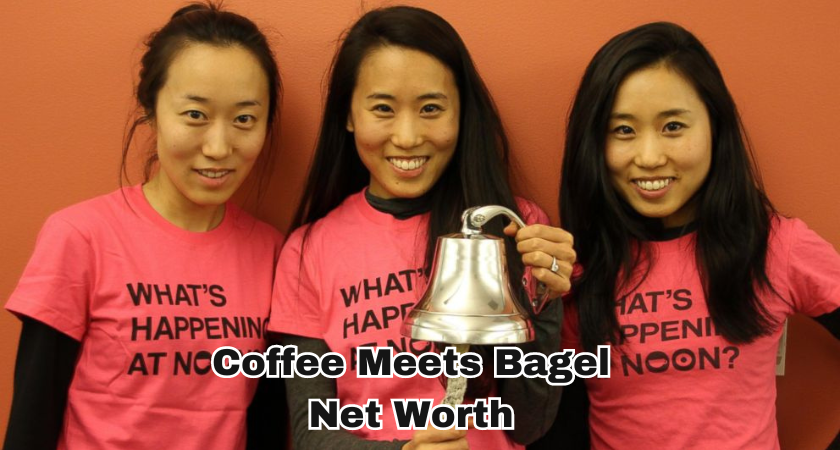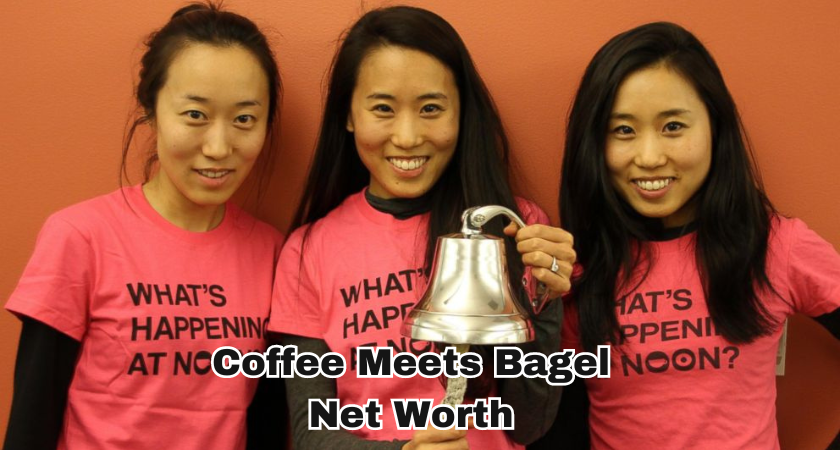Table of Contents
Coffee Meets Bagel has become one of the most popular dating apps on the market, with a unique approach to matching that has resonated with users. Behind the scenes, its growth into a multi-million dollar company is an impressive and inspirational entrepreneurial success story.
The Origins of Coffee Meets Bagel
Coffee Meets Bagel was founded by three sisters – Arum Kang, Dawoon Kang, and Soo Kang – in 2012. The idea for the app came from their own dating experiences and frustrations with existing options on the market.
As professional women living in New York City, the sisters found most dating apps overwhelming, with too many options and back-and-forth messaging that led nowhere. They envisioned something different: an app that would deliver quality over quantity when it came to matches and conversations.
After months of making plans and development, the first version of Coffee Meets Bagel launched in New York City in April 2012. The app quickly gained traction, attracting nice press and phrase-of-mouth buzz. Within the first few months, Coffee Meets Bagel expanded to Boston and San Francisco.
Read also: Arrowhead Travel Plaza

The Coffee Meets Bagel Difference
At the core of Coffee Meets Bagel was a commitment to a smarter, more thoughtful dating experience. Some of the key features that set it apart include:
- Limited Daily Matches: Instead of endless profiles, users receive a limited number of quality matches each day at noon. This reduces choice overload.
- Encourages Quick Offline Meetups: Matches expire within 7 days, encouraging members to exchange contact info and meet up soon rather than prolonged in-app messaging.
- Focuses on User Profiles and Preferences: Advanced preference settings and full profiles allow for more compatible pairings based on things like religion, ethnicity, height, and other factors important to users.
- Women Are in Control: On Coffee Meets Bagel, women make the first move and must message a match first before he can reply. This empowers women on the platform.
- In-Depth Analytics: Users receive feedback and statistics on their profile and activity to help them improve their experience over time.
This approach resonated. By early 2013, Coffee Meets Bagel had expanded to 3 major US cities and had raised $600,000 in seed funding from Lightbank, a venture capital firm co-founded by Groupon’s Andrew Mason.
Scaling Through Word-of-Mouth Buzz
Following their early success, the Kang sisters focused on strategic word-of-mouth marketing to drive growth. With a limited marketing budget, they looked to encourage:
- Social Sharing: The app’s onboarding process and interface made sharing profile screenshots on Facebook easy. Many users organically shared their fun match results.
- Post-Date Feedback: After two people met through the app, Coffee Meets Bagels would follow up asking how the date went and encourage users to share their great (or bad) experiences on social media.
- Referral Bonuses: Inviting friends to join and send free bagels as gifts helped word spread.
- PR Outreach: The novel women-focused concept attracted extensive press coverage in major outlets like the New York Times, Today Show, CNN, and more.
- Brand Ambassadors: Coffee Meets Bagel recruited unpaid “social media ambassadors” who could share their success stories as users and help spread the word.
These tactics helped Coffee Meets Bagel enter new markets like Los Angeles, Chicago, and Washington DC with significant buzz and excitement from early adopters. While competing apps raised tens of millions in venture capital for marketing, Coffee Meets Bagel grew primarily organically city by city.
Shark Tank Appearance Propels Growth
A huge inflection point came in January 2015, when Coffee Meets Bagel landed a coveted spot on the entrepreneur pitch show Shark Tank.
Founders Arum and Dawoon Kang bravely faced intense questioning from celebrity investors like Mark Cuban and Lori Greiner about their app’s business model and viability. The sisters confidently defended building an app “by women for women focused on quality,” winning over the investors.
Mark Cuban agreed to invest $30 million for a 7.5% stake – one of the largest deals in Shark Tank history at the time. This stamp of credibility provided a major boost.
Following the show, Coffee Meets Bagel’s user base doubled almost overnight. The fresh influx of capital from Cuba accelerated expansion plans and marketing spending. By mid-2015, Coffee Meets Bagel launched nationwide in America.
Introducing New Features and Monetization
With an exploding user base, Coffee Meets Bagel rapidly rolled out additional features and refined its monetization strategy:
- Coffee Meets Bagel Experiences: Local singles events, ranging from cooking classes to weekend trips, added new revenue streams.
- CMB Premium: A $35/month subscription unlocked perks like more profile views, dealbreakers, and activity reports.
- Bean Gifting: Users could purchase digital beans to send more matches and likes. This generated millions in extra sales.
- Online Store: Coffee Meets Bagel expanded into e-commerce, selling branded swag and gifts for users to give matches.
- Advertising: As users spent more time in-app chatting, highly-targeted ads for brands offered moneymaking potential.
By diversifying beyond basic subscription fees, Coffee Meets Bagel unlocked new ways to monetize its engaged user base.
Acquisition Offers Roll In
Coffee Meets Bagel’s impressive rise soon caught the attention of the major dating app players. In mid-2015, Tinder reportedly made an acquisition offer valuing Coffee Meets Bagel at $30 million – the same as Mark Cuban’s Shark Tank valuation.
The Kang sisters turned down the offer, believing in their app’s long-term potential. As growth continued, other big dating companies came calling with buyout bids:
- 2016: Coffee Meets Bagel raised $7.8 million in Series A funding, and rumors swirled of a $100+ million acquisition offer from Match Group (owner of Match.com, Tinder, OKCupid). Again, the founders declined.
- 2017: After Coffee Meets Bagel topped $20 million in revenue, Bumble reportedly made a $150 million+ acquisition offer. Once more, the team stayed independent.
- 2018: With continued momentum, sources claimed ** Match Group returned with a $600 million buyout bid**, which would have been among the largest exits in dating app history. But the Kang’s interest in selling seemed to fade.
Further Expansion Abroad
In 2017 and 2018, Coffee Meets Bagel began expanding aggressively across Asia, launching in markets like Hong Kong, Singapore, and Japan. Asia quickly became the app’s second-largest market.
Key to growth in Asia was tweaking the app for local preferences:
- Female-Friendly Messaging: The added audio and photo messaging options helped women feel more comfortable.
- Localization: In-app text and marketing were translated and adapted to resonate better.
- Payments: Integration of popular local Asian digital wallets like Alipay.
- Marketing Partnerships: Tie-ups with brands like HBO Asia helped raise awareness.
Asia’s massive population and high smartphone penetration presented a logical growth opportunity. Dating app competition was less entrenched than in the US.
By tailoring the app to Asian preferences, Coffee Meets Bagel found huge new potential. The founders even expressed interest in launching offices in Seoul and Singapore.
How does Coffee Meets Bagel compare to other dating apps in terms of revenue?
Coffee Meets Bagel brews up $21-25 million annually, ranking as the 14th top-earning dating app in the US and 19th worldwide. Over half of users pay for premium subscriptions, valuing the app’s curated approach to meaningful connections. While dwarfed by swiping giants like Tinder ($42B) and Bumble ($2.29B), Coffee Meets Bagel stands out for quality over quantity in the crowded dating app market.
A Singular Success Story
In just a few short years, Coffee Meets Bagel went from a scrappy dating app launched by three sisters to one of the biggest players in the market valued at hundreds of millions.
Its success was driven by:
- A thoughtful app design that resonated powerfully, especially with female users.
- Word-of-mouth marketing that catalyzed organic growth.
- Constant refinement through new features and monetization models.
- International expansion that tapped new markets.
While acquisition interest has been intense, the Kang sisters have maintained their independence – a rarity in the dating app space. With accelerating growth abroad and improving monetization, the future looks bright for Coffee Meets Bagel’s net worth and success story.
How Does Coffee Meet Bagel Generate Revenue?
Coffee Meets Bagel generates revenue primarily through in-app purchases and subscriptions. The company’s estimated annual revenue is currently $21.3 million. Here are some key revenue streams for Coffee Meets Bagel:
In-app purchases
Users can purchase “beans” (in-app currency) to like bagels found in the “Discover” section. Beans can be used to show interest in additional matches beyond the curated “bagels” provided daily.
Premium subscriptions
Coffee Meets Bagel offers premium features to users who subscribe to their services. Over half of the app’s users are premium subscribers.
Funding
The company has raised significant funding since its launch, with a total of $23.2 million in funding. This includes $12.0 million in venture funding received in May 2018.
Despite its popularity and revenue generation, Coffee Meets Bagel has not yet reached a deal with Shark Tank investors. However, the company has successfully raised funds through various investment rounds and is currently valued at $150 million.




